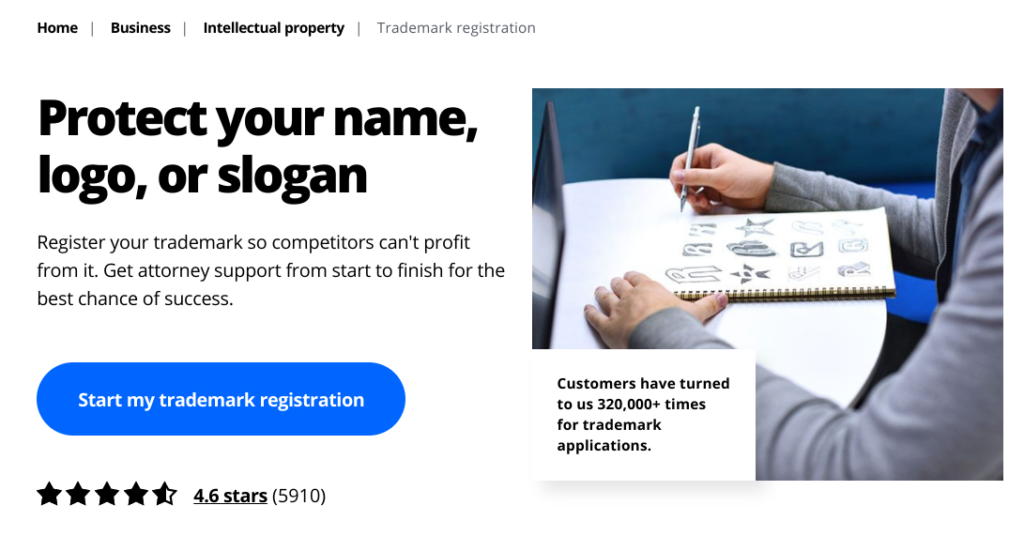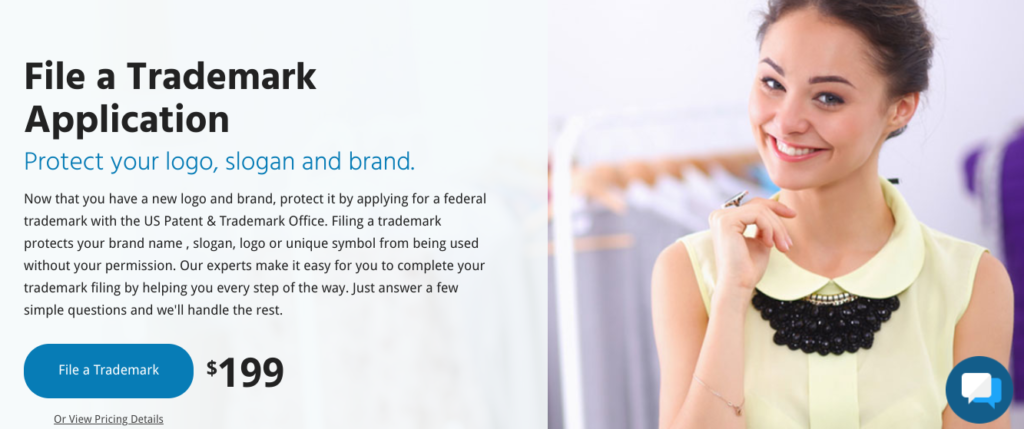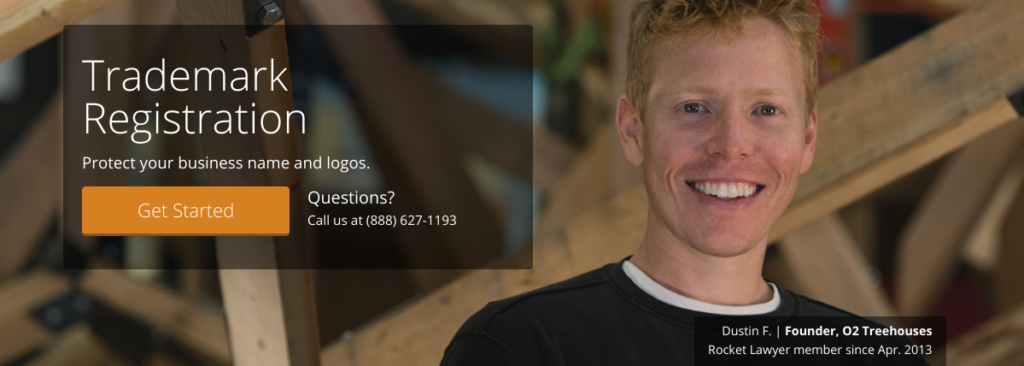Branding is vital for businesses. It’s what sets you apart from your competitors and puts you at the forefront of potential customers’ minds.
Therefore, you should protect your brand with a trademark.
But if you’re a newbie to this kind of thing, then you probably don’t know what kind of protection you need or even what you can protect. Plus, when it comes to actually applying for a trademark, the process can be lengthy and complex.
So in this guide, we’ll explain everything you need to know about trademarks and help simplify the process.
What Is a Trademark?
A trademark is usually a word, phrase, symbol, or design that represents your brand. It belongs to you legally and differentiates your products or services from those of other companies. This means that other companies can’t use similar assets to sell their goods.
The Basics of Trademarks
If you want to apply for a trademark, you need to be equipped with the right knowledge. It’ll make the process clearer and you’ll be less likely to get rejected. So here we’ll explain the ins and outs of trademarks and the trademark application process.
What Can You Trademark?
You may have assets that you didn’t realize you could trademark. It would be a shame if you didn’t protect them simply through a lack of knowledge. So let’s take a look at what you can and can’t trademark.
The most common trademarks, as mentioned above, are words and elements of design. More often than not, these are business names, product names, and/or logos. Think of the Nike swoosh or Amazon’s logo with the arrow under the name–not only are the names “Nike” and “Amazon” trademarked, but the visual elements of their logos are, too.
But you can trademark a number of things that distinguish your brand from another. These include, for example, the shape of goods or packaging, slogans, colors, and patterns. In the shipping industry, it’s not a coincidence that UPS has brown trucks while FedEx has white ones–those colors are trademarked to those companies.
On the other end of the spectrum, there are also words and symbols you won’t be able to trademark. This includes any kind of generic term or phrase like “the best XYZ company.”
You also can’t trademark a descriptive business name, e.g. The Gardening Company, or a name that includes a geographic location, e.g. Manchester Gardening. Nor can you trademark a word or symbol that’s considered deceptive or scandalous.
Trademark Rules
Trademarks protect your intellectual property, i.e. your unique, recognizable creations. You need to know exactly what this means and what kind of legal rights you have so that you don’t fall foul of copycats and thieves.
First off, another company can’t use your intellectual property without your permission. If you find that they do, you have the right to enforce the trademark (get them to stop using it) and take legal actions against the company if necessary.
Another important thing you need to know is that a name, symbol, design element, etc., doesn’t have to be exactly the same as yours to be considered an infringement. It just needs to be “confusingly similar.”
In other words, if a customer might not be able to distinguish two brands from one another because of the mark, it’s a problem. A mark can’t look or sound similar to another.
But this is only the case if both companies are in the same industry. For example, Delta Airlines and Delta Faucets can both exist because consumers are unlikely to be confused by what they’re purchasing from the company.
You couldn’t, however, have a sportswear company with a checkmark as the logo as it would be too similar to the Nike swoosh.
You should also know that even unregistered trademarks have some level of protection when you use the symbol  . If you’ve used the trademark for a number of years and/or your business has a solid reputation, you have so-called common law rights.
. If you’ve used the trademark for a number of years and/or your business has a solid reputation, you have so-called common law rights.
This means you can enforce the trademark. However, you would need to provide evidence that your trademark is long-standing and recognized by the public, which might be difficult.
Registering a Trademark
You can register a trademark online via the United States Patent and Trademark Office (USPTO). It’s convenient, but the application process is rather complex.
There are multiple steps and you must read the application form carefully to make sure you understand everything. There’s also in-depth research that you need to carry out before you even begin to fill in the form.
You’ll need to check that there aren’t any confusingly similar trademarks already in existence. This is called a clearance search. Use the Trademark Electronic Search System (TESS) to search for existing word and/or design marks.
If there’s already a similar mark and that company offers similar services or products to you, then you won’t be able to register the trademark.
If you have a new business you can go back to the drawing board. There’s no point in applying for a trademark that won’t be accepted as the application fee is non-refundable.
When you come to file your application through the Trademark Electronic Application System (TEAS), you’ll be given a choice of the TEAS Standard application or TEAS Plus.
The main difference between the two is that the TEAS Standard is more expensive at $350 per class of goods but you can fill in certain sections of the form at a later date. So you might prefer this option if you don’t have all of the information and evidence you need ready to submit just yet.
Note that when you send in your application, there’s no guarantee that you’ll get the trademark. But your chances are good if you’ve done your research and filled in the form carefully.
It can take several months for the trademark to come through as USPTO performs its own checks and sends the application to an attorney who decides whether your application can move forward.
3 Tools to Improve Trademark Registration
If the application process sounds overwhelming then you may wish to seek outside help. These companies will take care of the clearance search and trademark registration for you:
LegalZoom

LegalZoom offers a range of business, financial, and legal services. As such, it’s launched over two million companies.
Plus the folks at LegalZoom have worked with over 320,000 customers on trademark applications. So it’s safe to say this company has a ton of experience.
It has a network of independent attorneys which allows it to specialize in creating untouchable trademarks and enforcing your legal rights.
The process of applying for a trademark with LegalZoom is simple. Just choose the right package to suit your needs.
The Do It Yourself package costs $249 plus the federal filing fee. With this package, LegalZoom performs a basic clearance search. Then you complete the application using their step-by-step guide. And finally, LegalZoom proofreads the application, completes it where necessary, and files it with USPTO.
The attorney-led package is much more expensive at $599 plus the federal filing fee. Yet it comes with a guarantee. If your first application gets rejected, they’ll complete a second application at no extra cost.
With this package, the attorney does all of the research and filing for you. All you’ll need to do is answer a few questions about your trademark.
MyCorporation

MyCorporation is a business formation service that specializes in helping small businesses. What makes this company stand out is that they take care of all the legwork for you.
First, you’ll complete an online questionnaire with simple questions about your trademark. Or, if you prefer, you can speak to a member of the team and they’ll walk you through the questions.
Next, MyCorporation fills in the paperwork and files it with USPTO on your behalf. When your application is accepted they’ll send you all of the legal documentation you need.
The trademark application package costs $199 plus the federal filing fee.
You’ll need a separate package for the clearance search. As part of this package, experts conduct a comprehensive search of registered and pending trademarks in the database. This means you can be sure that your trademark is unique and you won’t risk having your application rejected.
The extensive clearance search costs $249. So if you want both the clearance search and the trademark application done for you, it comes to a total of $448 plus the federal filing fee.
Rocket Lawyer

Rocket Lawyer offers affordable legal services, specializing in personal, real estate, and business documentation.
Given the fact that documentation is their specialty, it offers a truly comprehensive trademark application service.
With Rocket Lawyer, you can get a custom package to suit your needs. Naturally, the company can take care of the clearance search and application filing with USPTO. But there are a few more useful services you may wish to take Rocket Lawyer up on.
You can get a consultation with a trademark attorney to create a trademark application strategy. Moreover, you can get priority processing to speed up your application. There’s also a trademark transfer service for those that need it.
3 Tricks for Trademarking a Business
Here are our best tips for making a strong trademark application and keeping your trademark secure in the long term:
Apply for A Trademark ASAP
If you want to apply for a trademark, don’t wait around to do it. It makes sense to protect your branding as soon as possible. Also, consider the fact that the process can take a while.
The good thing is that you can register a trademark that you intend to use with USPTO. So even if you haven’t started trading yet, you can submit an initial application to reserve your trademark.
Choose a Compelling Business Name You Can Trademark
The last thing you want is for your trademark application to be rejected. You should now have a good understanding of what you can and can’t trademark which is a good starting point.
Not only that, but you also need a strong, unique business name to represent your brand. If you can trademark a name like this then you’ll stand out from other companies and no one can hang on your coattails.
Traditionally, you’d choose a name that illustrates your product or service. But we know you’re unlikely to get a trademark for a descriptive name. So you need to think outside of the box.
You could invent a name from scratch by mashing up words. Netflix, for example, is a mash-up of “Internet” and “flicks”.
Or perhaps you could name your business after your inspiration. The name Reebok, for instance, comes from the company’s spirit animal, the rhebok, which is a species of antelope.
Enforce Your Trademark
USPTO won’t look for trademark infringements. This is something you need to do yourself by keeping a watchful eye over others in your industry.
Make sure no other companies use any assets similar to those you trademarked. The reason being it’ll reduce the impact your brand has on the market.
So what do you do if you think another company is using your trademarked assets?
The first step is to figure out if there’s actually an infringement. Remember that there’s only an infringement if you and the other company offer similar products or services.
If you believe there is an infringement, seek legal help as soon as possible. An attorney will be able to send a cease and desist letter on your behalf. And take further action, e.g. taking the company to court, if they fail to act on your letter.
What to Do Next
Applying for a trademark is just one item you need to check off the list in the early stages of starting a business.
The next thing you might need to do is get a federal tax number for your business. You’ll need it if you hope to open a business bank account or hire employees.
You may also be interested in creating a business website so that potential customers can find you online. Here’s how to buy a domain name that represents your brand.
And, finally, you should check out our guide to the best business formation services as they can help take care of all of the above for you.
from Quick Sprout https://ift.tt/3sqWhhF
via IFTTT
